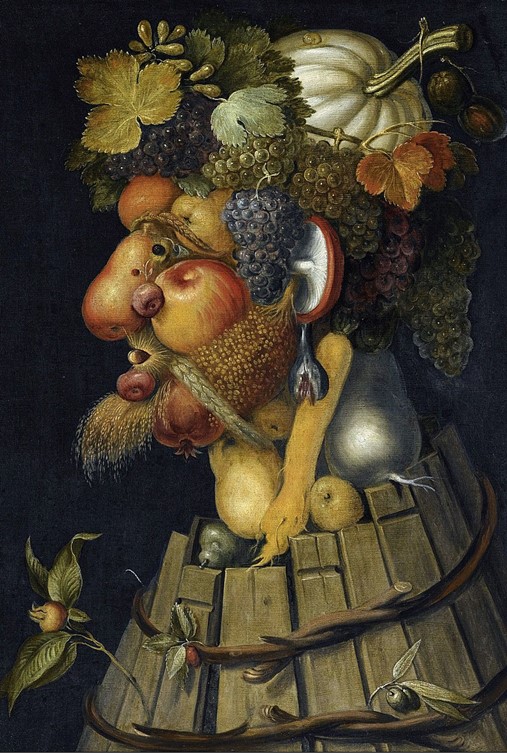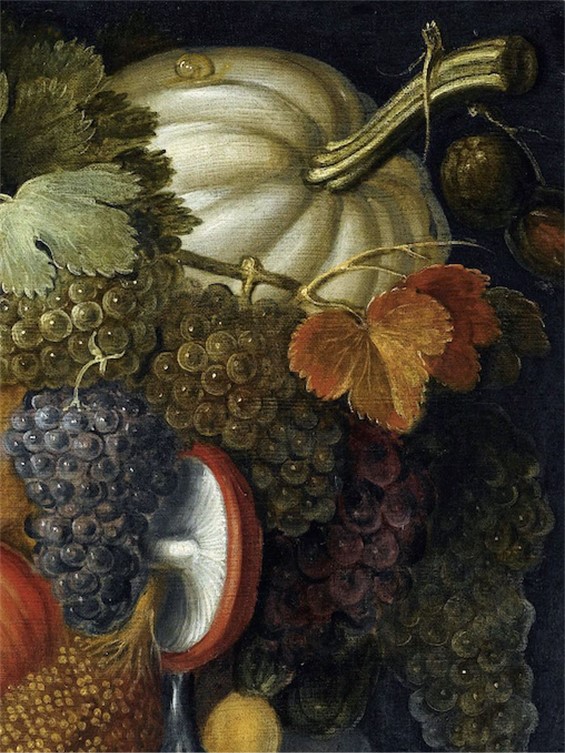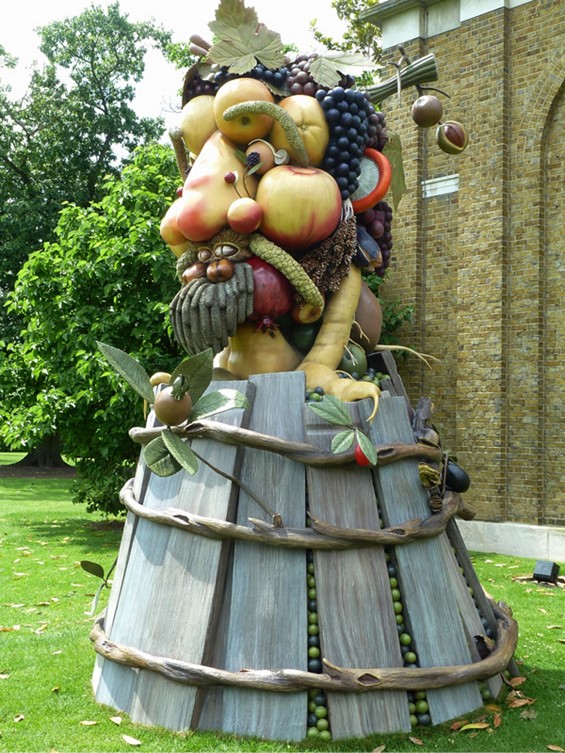
The Four Seasons – Autumn, 1573, oil on canvas, 76×64 cm, Louvre Museum, Paris, France https://commons.wikimedia.org/wiki/File:Arcimboldo_Oto%C3%B1o.jpg
The peasant celebrates with song and dance the harvest safely gathered in. The cup of Bacchus flows freely, and many find their relief in deep slumber. / The singing and the dancing die away / as cooling breezes fan the pleasant air, / inviting all to sleep / without a care. / The hunters emerge at dawn, / ready for the chase, / with horns and dogs and cries. / Their quarry flees while they give chase. / Terrified and wounded, the prey struggles on, / but, harried, dies. This is Antonio Lucio Vivaldi’s (1678 – 1741) Sonnet L’Autunno (Autumn). The great composer wrote it as a descriptive accompaniment, experts believe, for the music of his “Four Seasons.” Today, I took the time to listen, read and look at Autumn by Giuseppe Arcimboldo! It was a magical time! https://www.charlottesymphony.org/blog/vivaldis-four-seasons-poems/
A scion of a noble and artistic family, his father was an artist, and his uncle held the position of Archbishop of Milan, Giuseppe Arcimboldo (1526–1593) was in all probability introduced to artists, scholars, and writers from a young age. Born and raised in Milan, the cradle of Renaissance naturalism, young Arcimboldo learnt a mode of artistic expression based on the direct observation of nature. Well-trained as an artist Arcimboldo was commissioned to do exceptional work at the age of 21. For example, in 1549 he was commissioned to design stained glass windows for the Duomo, in 1551 he painted coats of arms for the future Emperor, Ferdinand I, in 1556, he created frescoes for the Cathedral of Monza; and, in 1558, he drew the cartoon for the Dormition of the Virgin tapestry, which remains on display in the Como Cathedral in Lombardi to this day. https://www.theartstory.org/artist/arcimboldo-giuseppe/life-and-legacy/#biography_header and file:///C:/Users/aspil/OneDrive/Blog/Renaissance%20Mannerism/Arcimboldo%20ScoopNGA.pdf
In 1573 Giuseppe Arcimboldo painted a series of paintings of the four seasons for Habsburg Emperor Maximillian II. Autumn is one of them… with a berry for an eye, a pear for a nose, and grapes and leaves for a crown of hair, Arcimboldo’s Autumn is as captivating and quizzical as it was 500 years ago. https://news.artnet.com/art-world/giuseppe-arcimboldo-autumn-three-things-2039018

The Four Seasons – Autumn (detail), 1573, oil on canvas, 76×64 cm, Louvre Museum, Paris, France
https://news.artnet.com/art-world/giuseppe-arcimboldo-autumn-three-things-2039018
Interestingly, while Spring and Summer appear as youthful women, Autumn and Winter have the faces of grizzled old men. Autumn is presented with rough features looking to the left. His thick neck, made up of pears and root vegetables, emerges from a partially destroyed wine barrel. His face is made of apples, and pears, a chestnut for his mouth, and a pomegranate for his chin. The mushroom ear is adorned with a fig-shaped earring, and the hair, made up of bunches of different-coloured grapes, is crowned with a pumpkin bonnet! How more Autumnal Arcimboldo’s portrait can be!
For a PowerPoint of the Four Seasons by Giuseppe Arcimboldo, please… Check HERE!
I would like to draw your attention to a modern take of Arcimboldo’s The 4 Seasons paintings… a set of four-and-a-half meters high fiberglass sculptures of the Four Seasons by American artist and filmmaker Philip Haas, created in 2012. Interesting… to say the least! https://crystalbridges.org/blog/the-four-seasons-philip-haas-interprets-giuseppe-arcimboldo/

The Four Seasons – Autumn, 2012, fiberglass, H. 4.572 m, first seen in the garden of the Dulwich Picture Gallery, London, UK
https://laughingsquid.com/giant-head-sculptures-representing-four-seasons/